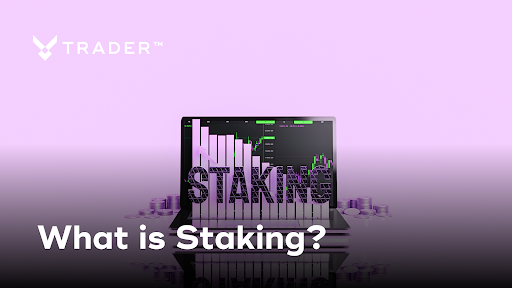Cryptocurrency Staking: A Comprehensive Guide
Introduction
Staking crypto isn’t just about locking up tokens and walking away. You’re lending your assets to a network that needs them—to validate transactions, keep things secure, and, ideally, reward you in the process. Peercoin was the first to do it back in 2012. Since then, staking has gone from niche experiment to core infrastructure.
Compared to mining, it’s cleaner. Way more efficient, too. Proof-of-Stake (PoS) has been picking up steam because it ditches the energy waste tied to mining rigs and warehouse-scale setups. You don’t need a GPU army to get involved—just a wallet and a willingness to commit.
And now with things like liquid staking and restaking, you’ve got flexibility. You’re not stuck choosing between earning and accessing your assets. The ecosystem is maturing, fast. If you’re in crypto, staking’s no longer optional—it’s part of the game.
What is Staking?
Staking means putting your crypto to work by helping a blockchain run. You lock up tokens, they get used to secure the network, and you earn rewards in return. Simple in theory. Gets more nuanced in practice.
Ethereum’s switch to PoS changed the landscape. No more high-power mining setups. Just validators and stakers running the show. It’s a greener, more scalable setup that also happens to be way more accessible.
Of course, there are catches:
- Becoming a validator can require a big upfront stake (32 ETH, in Ethereum’s case)
- Your tokens might be locked for days or weeks
- Big staking pools can lead to too much control in too few hands
That’s where the newer staking models come in. Liquid staking lets you stay flexible. Restaking unlocks capital efficiency—you use the same tokens in multiple places. Together, they’ve pushed staking beyond its early limits and into DeFi’s fast lane.
Types of Staking
Depending on how involved you want to get, there’s more than one way to stake.
Standard Staking
You lock your tokens right into the network. You might even run your own validator node. This gets you direct access to rewards and governance rights—but it also means dealing with technical setups, uptime requirements, and potentially large capital commitments.
Delegated Proof-of-Stake (DPoS)
You don’t want to run a node? No problem. With DPoS, you hand your voting power to a validator you trust. They do the heavy lifting. You still get a cut of the rewards. It’s lower-maintenance, lower-risk—but you give up some control.
Soft Staking
Here’s the hands-off approach. Your tokens stay in your wallet, and you still earn rewards. No contracts, no lock-ups. The trade-off? Reward rates are usually lower, but you keep liquidity. That can matter when the market moves fast.
You’ll want to choose based on how active you want to be, how much you’re staking, and how quickly you might need access to your funds.
Benefits of Staking
There are real upsides to staking. It’s not just “set it and forget it.”
Earning While You Hold
Rewards are the obvious draw. Stake your tokens, earn more of them. The longer you commit, the better the rate (usually). It’s passive income—but it’s also participation.
Cleaner Than Mining
PoS doesn’t rely on power-hungry machines. That makes it better for the environment and way more cost-effective. No need to worry about electricity bills or hardware failure.
You Support the Network
By staking, you’re adding security and resilience to the blockchain. It’s a win-win. You help keep the network honest, and it pays you to do so.
Governance Power
In many networks, stakers get a voice. You can vote on protocol upgrades, fee changes, and governance proposals. It’s not just about earning—you’re helping shape the protocol’s future.
Risks of Staking
This isn’t risk-free territory. Know what you’re walking into.
Price Volatility
You might earn 5% over the year. Cool. But if the token drops 40% in a month? You’re still underwater. Staking doesn’t shield you from market swings. Keep that in mind before you commit capital.
Lock-Up Periods
Some protocols lock your assets for days—or longer. If the market crashes during that time, you can’t move fast. That lack of flexibility can sting.
Technical Errors
Running your own validator sounds good until your server goes down. Downtime, poor performance, or misconfiguration? You can get slashed, meaning part of your stake gets burned. Delegating helps avoid this, but it introduces its own risks.
Centralization Pressure
When everyone delegates to the same big validators, power gets concentrated. That undermines the whole point of decentralization. If too few players control too much stake, the network becomes fragile.
How to Reduce Risk
- Spread your stake across different validators or platforms
- Use liquid staking products to stay flexible
- Avoid putting all your capital into a single protocol
- Check validator reputations—performance history matters
Smart staking isn’t just about yield. It’s about minimizing exposure and staying nimble.
Staking vs. Other Consensus Mechanisms
PoS has become the dominant model for a reason—but it’s not the only one.
Staking vs. Proof-of-Work
Mining still exists, but it’s resource-heavy. You need gear, power, and space. Staking, on the other hand, is far lighter. You don’t need to be a tech wizard. You just need assets.
Staking also enables faster transactions, better scalability, and lower costs. PoW still wins on its long-term security track record, but it’s falling out of favor for most new networks.
Hybrid Consensus
Some chains are experimenting—mixing PoW with PoS or adding layers like Proof-of-History. These hybrids aim to get the best of both worlds: security, scalability, and efficiency. They’re promising, but still in development.
Where the Market’s Going
Ethereum moved to staking. So did Solana, Avalanche, Polkadot, and more. The message is clear: PoS is becoming the default. If you’re building a future-proof portfolio, staking should be on your radar.
The Future of Staking
Staking isn’t static. It’s evolving—fast.
Liquid Staking
No more locking your funds and waiting. Liquid staking gives you a tokenized version of your staked assets (like stETH or rETH), which you can then use in DeFi. You stay staked and liquid at the same time.
Restaking
Now you can reuse those assets across multiple protocols—compounding your impact (and your yield). Projects like EigenLayer are leading the charge. It’s efficient, but it adds complexity. Keep an eye on risk exposure.
What Comes Next
More chains will adopt PoS. More tools will emerge for managing your stake. Regulation will get tighter. And with that, better protections and clearer rules should follow.
Open Questions and Research Gaps
- How will staking affect long-term token supply dynamics?
- Can validator concentration be reversed, or is centralization inevitable?
- What risks come with widespread restaking?
- Will staking rewards remain attractive as more people join in?
We’re still early. If you’re paying attention, there’s a lot to learn—and plenty of opportunity to stay ahead of the curve.
Conclusion
Staking is no longer just for the crypto-savvy. With the rise of PoS chains and platforms that simplify participation, you can earn, govern, and support a network without touching mining gear.
Still, staking isn’t set-it-and-forget-it. You’ve got to account for volatility, liquidity constraints, and validator trust. Get sloppy, and you could lose more than you gain.
The good news? Tools like liquid staking and restaking are making it easier—and smarter—to get involved. If you’re strategic, you can stack rewards while helping shape the blockchain’s future.
So don’t just HODL. Stake. Contribute. Build the next generation of decentralized finance—one block at a time.

Steve Gregory is a lawyer in the United States who specializes in licensing for cryptocurrency companies and products. Steve began his career as an attorney in 2015 but made the switch to working in cryptocurrency full time shortly after joining the original team at Gemini Trust Company, an early cryptocurrency exchange based in New York City. Steve then joined CEX.io and was able to launch their regulated US-based cryptocurrency. Steve then went on to become the CEO at currency.com when he ran for four years and was able to lead currency.com to being fully acquired in 2025.


